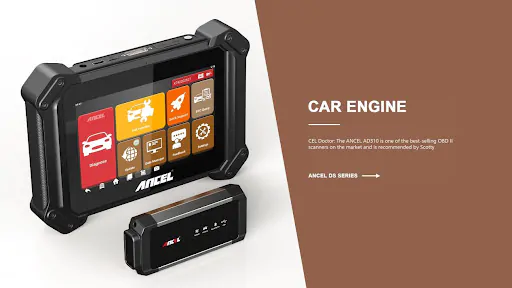Keeping Cool: The Essentials of Ductless Mini Split Repair

Ductless mini-split systems have become increasingly popular for their efficiency, flexibility, and ease of installation. However, like any HVAC system, they may encounter issues that require professional repair to ensure optimal performance and longevity. In this guide, we’ll explore the ins and outs of ductless mini-split repair, covering common problems, troubleshooting tips, and the importance of timely maintenance to keep your system running smoothly.
Understanding Ductless Mini-Split Systems
Before delving into repair considerations, it’s essential to have a basic understanding of how ductless mini split repair systems operate. Unlike traditional HVAC systems that rely on ductwork to distribute air, ductless mini-splits consist of an outdoor condenser unit connected to one or more indoor air handlers via refrigerant lines. Each indoor unit is controlled independently, allowing for customizable comfort zones and increased energy efficiency.
Common Ductless Mini-Split Problems
Despite their reliability, ductless mini-split systems can experience various issues over time. Some common problems include:
Refrigerant Leaks
Refrigerant leaks can occur due to aging components, improper installation, or physical damage to the refrigerant lines. Symptoms of a refrigerant leak include reduced cooling capacity, ice buildup on the indoor unit, and hissing sounds near the refrigerant lines.
Airflow Issues
Poor airflow can result from clogged air filters, dirty coils, or obstructions around the indoor unit. Reduced airflow can lead to uneven cooling, decreased efficiency, and strain on the system’s components.
Electrical Malfunctions
Electrical problems, such as faulty wiring or malfunctioning components, can cause the system to malfunction or fail to operate altogether. Common signs of electrical issues include tripped circuit breakers, flickering lights on the indoor unit, and unresponsive controls.
Sensor Problems
Ductless mini-split systems rely on sensors to regulate temperature and humidity levels. Sensor malfunctions can lead to inaccurate temperature readings, frequent cycling, and discomfort in the conditioned space.
Troubleshooting and Diagnosis
While some ductless mini-split issues may require professional intervention, there are several troubleshooting steps homeowners can take to identify and address minor problems:
Check Air Filters
Inspect the air filters on the indoor units and clean or replace them if they appear dirty or clogged. Restricted airflow due to dirty filters can strain the system and impact performance.
Clear Obstructions
Ensure that the indoor and outdoor units are free from debris, vegetation, or other obstructions that could impede airflow or damage the system.
Verify Power Supply
Check that the system is receiving power by verifying the circuit breaker or fuse box. Reset any tripped breakers or replace blown fuses as needed.
Inspect Refrigerant Lines
Visually inspect the refrigerant lines for signs of damage or leaks, such as oil stains or frost accumulation. If a leak is suspected, contact a qualified technician to perform a thorough inspection and repair.
The Importance of Professional Repair
While DIY troubleshooting can resolve minor issues, some ductless mini-split problems require the expertise of a trained HVAC technician. Professional repair offers several benefits, including:
Correct Diagnosis
Experienced technicians have the knowledge and tools to accurately diagnose the root cause of ductless mini-split problems, ensuring effective and long-lasting repairs.
Safety
Working with HVAC systems involves electrical components and refrigerants that can pose safety risks if mishandled. Professional technicians follow industry best practices and safety protocols to protect both themselves and the homeowner.
Warranty Protection
Attempting DIY repairs or hiring unqualified technicians can void the manufacturer’s warranty on your ductless mini-split system. Opting for professional repair ensures that the warranty remains intact, providing added peace of mind and financial protection.
Preventive Maintenance Tips
Regular maintenance is key to preventing ductless mini-split problems and extending the lifespan of your system. Here are some preventive maintenance tips to keep in mind:
Clean or Replace Air Filters
Inspect and clean or replace the air filters on the indoor units every one to three months to ensure proper airflow and system efficiency.
Schedule Professional Tune-Ups
Schedule annual or biannual maintenance appointments with a qualified HVAC technician to inspect, clean, and tune up your ductless mini-split system.
Keep Outdoor Unit Clear
Regularly remove debris, leaves, and vegetation from around the outdoor condenser unit to maintain optimal airflow and prevent overheating.
Monitor Performance
Pay attention to any changes in your ductless mini-split system’s performance, such as unusual noises, reduced cooling capacity, or increased energy consumption. Promptly address any issues to prevent further damage and costly repairs.
Conclusion
Ductless mini-split systems offer efficient and customizable heating and cooling solutions for homes and businesses. By understanding common problems, troubleshooting tips, and the importance of professional repair and maintenance, homeowners can ensure their ductless mini-split systems remain reliable and efficient for years to come. If you encounter any issues beyond your DIY capabilities, don’t hesitate to contact a qualified HVAC technician to assess and address the problem promptly.





